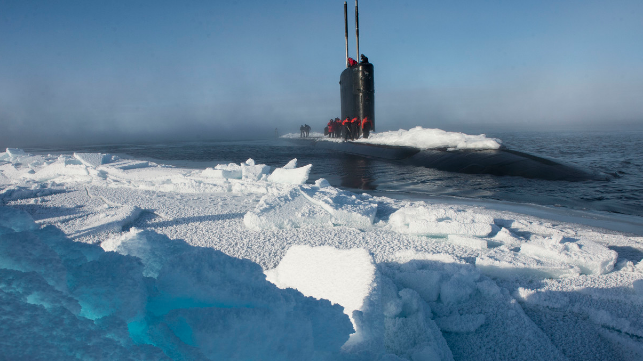NORAD Warns of New Cruise Missile Threat as Arctic Opens Up

The commander of the North American Aerospace Defense Command (NORAD) and U.S. Northern Command, Air Force Gen. Terrence O'Shaughnessy, warned Tuesday that the United States faces an unaddressed threat from potential cruise missile attacks originating in Arctic latitudes. The general has previously noted that the Russian Navy has been deploying warships with cruise missiles on Arctic sea lanes, along with regular military aircraft patrols above the North Pole and "up to the edge of U.S. and Canadian airspace."
As the ice recedes and the Arctic opens up, new avenues of approach to the United States are also created, O'Shaughnessy said at an address at CSIS on Tuesday, and the U.S. must be prepared. "The Arctic is not just a place you can pick up and go to," he said. The Arctic is fundamentally different from other operating U.S. military operating areas and requires specialized training and equipment.
In previous speeches, O'Shaughnessy has also pointed out that Russia is designing a new, difficult-to-defeat hypersonic cruise missile for its submarine and surface fleets. In recent decades, American cruise missile defense has received less of an emphasis than ballistic missile defense, which has a budget of up to $12 billion per year.
"Surprisingly, there is not that much conversation about cruise missiles," he told the audience. "When I look at the cruise missile threat, I see that as one of the biggest threats we face."
The cost of defending against cruise missiles is currently high, he acknowledged. Interceptors for cruise missiles cost more than the inbound missiles themselves, he said, and the United States must "flip the cost curve" and "find a way that we can have a deep magazine with a high rate of fire."
NORAD has its origins in the Cold War-era nuclear arms race between the U.S. and the USSR, and Russian military capabilities are still among its primary concerns. In a speech in February, O'Shaughnessy made clear that he sees "striking parallels between" today's security risks and the tense geopolitical competition of yesteryear. "We face a more competitive and dangerous international security environment today than we have in generations and, like yesterday, our security environment is marked by the re-emergence of great power competition with an evolving balance of power, the changing nature of conflict, and the rapid evolution and proliferation of technology," he said at a defense conference in Ottowa.
